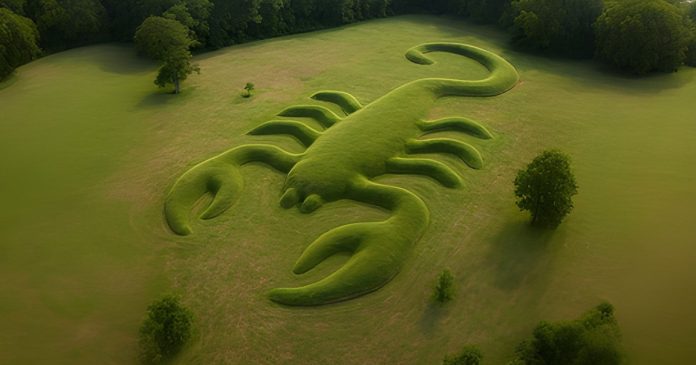Scorpion Observatory Mound discovered in Tehuacán Valley marks a rare archaeological find in Mesoamerica. Researchers identified a 62.5-meter-long earthen structure shaped like a scorpion. It lies within a prehistoric irrigation system in Puebla, Mexico. The mound’s alignment suggests it may have functioned as a solar observatory. Its orientation matches sunrise and sunset positions during solstices.
Effigy mounds are common in North America but rare in Mesoamerica. This makes the Scorpion Observatory Mound discovered in Tehuacán Valley especially significant. The structure’s location within a vast canal system hints at its ceremonial and agricultural importance.
Location and Environmental Context
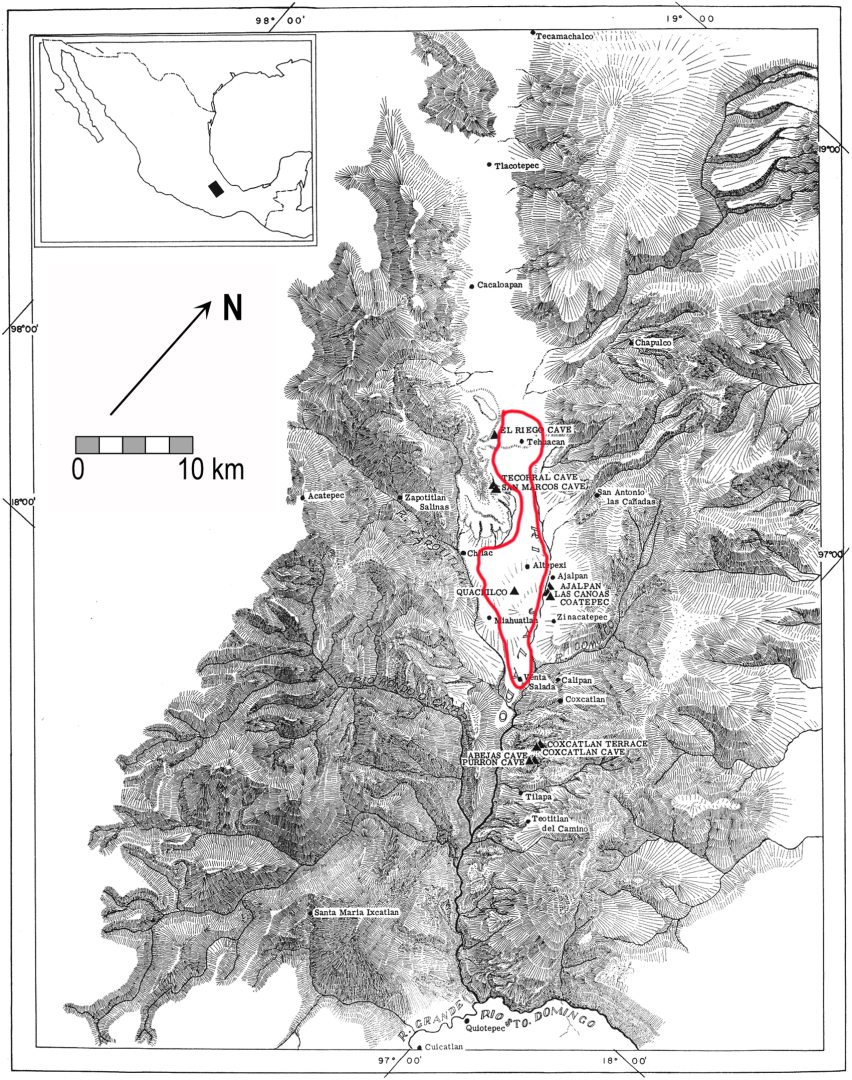
The mound sits in the Llano de la Taza, a gently sloping travertine plain. This area is part of the Tehuacán Valley, which spans 2,000 square kilometers. The valley’s climate is arid and temperate, with high evapotranspiration. Agriculture here required irrigation, making water management essential.
Image Source: Neely J, Et al The Scorpion Mound Complex: doi:10.1017/S0956536125000070 CC BY 4.0
Scorpion Observatory Mound discovered in Tehuacán Valley lies near the center of a five-segment canal system. These canals date back to 2000 BCE and remain partially intact. The mound’s placement suggests it may have served as a central ritual or civic feature.
Structural Features of the Complex
The site includes 12 mounds spread across 9 hectares. The Scorpion Mound is the largest and most distinct. It features a body, claws, and a curved tail ending in a raised “stinger.” The mound is built from travertine cobbles over an earthen base. Its surface is undulating, with no flat area for standing or construction.
Scorpion Observatory Mound discovered in Tehuacán Valley is not surrounded by other mounds. The nearest is 107 meters south. Ten other mounds form two diagonal rows, oriented southwest to northeast. Larger mounds have courtyards or plazas, while smaller ones do not.
Ceramic Evidence and Dating
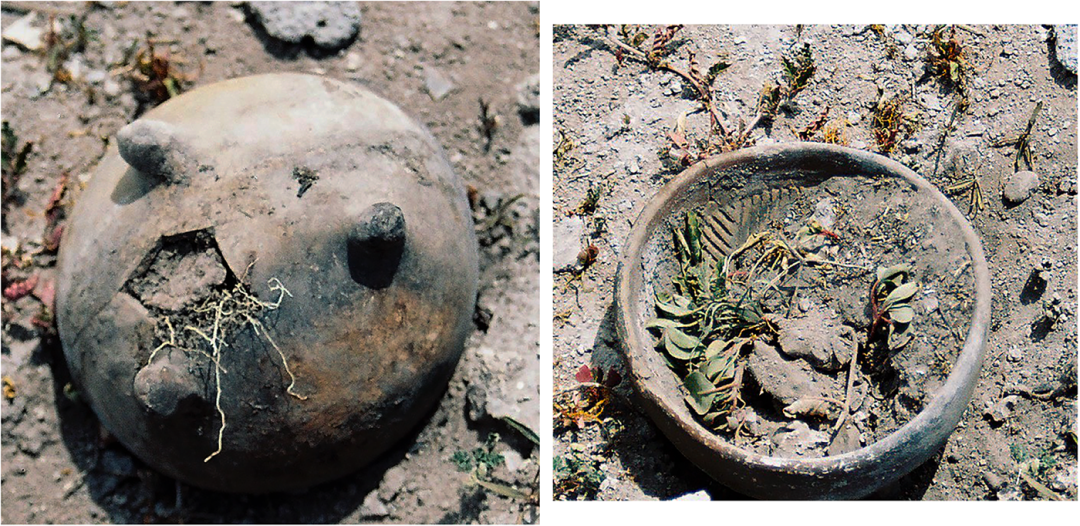
Surface ceramics suggest the site was occupied during the Late Classic and Postclassic periods (600–1100 CE). Sherds include bowls, jars, molcajetes, and incense burners. Many pieces were locally made, but some were traded from regions like Cholula and the Mixteca.
Scorpion Observatory Mound discovered in Tehuacán Valley yielded decorated ceramics and ritual items. These include a tripod molcajete covered by a bowl, containing tobacco and chilies. This offering was found near the mound’s head, suggesting continued ritual use.
Astronomical Alignments and Function
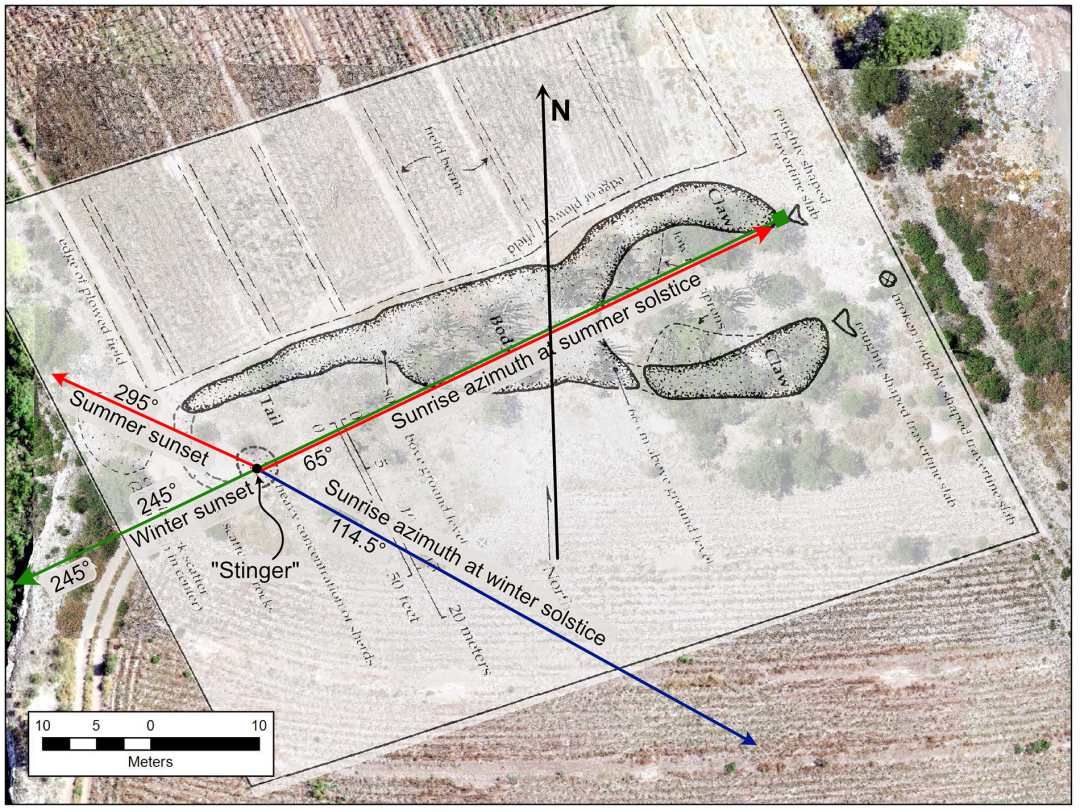
The mound’s orientation points east-northeast. This matches the sunrise azimuth on the summer solstice. From the “stinger,” the sun rises over the left claw. On the winter solstice, sunset aligns from the claw back across the tail.
Scorpion Observatory Mound discovered in Tehuacán Valley may have helped farmers track seasonal changes. Solstice observations could guide planting and harvesting. The mound’s design supports its use as a solar calendar.
Researchers used drone imagery and solar calculators to estimate alignments. While further field testing is needed, the evidence supports intentional astronomical design.
Symbolism and Religious Meaning
The scorpion figure represents Tlāhuizcalpantēcuhtli, the Aztec deity linked to Venus. Venus was associated with rain, fertility, and agricultural cycles. The mound’s shape and orientation reinforce its symbolic role. The Mound may have served as a ritual site to invoke rain and crop success. Its connection to Venus and solstices aligns with Mesoamerican cosmology.
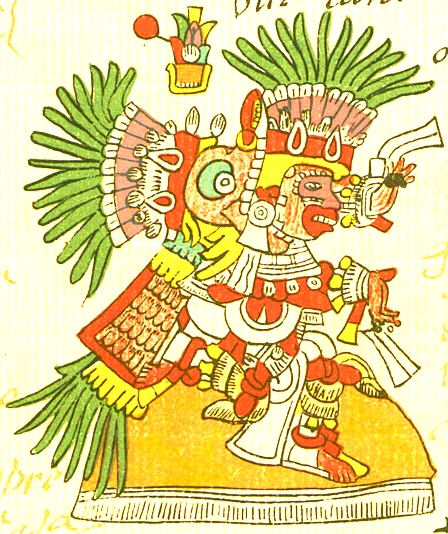
Other features support this interpretation. Cut stone pincers lie near the claws. A cactus species often planted by humans borders the mound. Ritual ceramics and figurines suggest ceremonial use.
Comparison with Other Effigy Mounds
Effigy mounds are rare in Mesoamerica. The few known examples include snake and bird mounds at Casas Grandes in Chihuahua. Another possible effigy exists in Sinaloa but remains undocumented.
Scorpion Observatory Mound discovered in Tehuacán Valley stands out for its size, clarity, and context. Unlike elite urban temples, this mound reflects rural ceremonial practice. It shows how local communities engaged with astronomy and agriculture.
Implications for Water Management and Ritual Integration
The mound lies near a bifurcation point in the canal system. This location may have had administrative significance. Water distribution was critical in the valley’s dry climate.
Scorpion Observatory Mound discovered in Tehuacán Valley may represent a fusion of ritual and water management. Its builders likely used it to mark solstices and coordinate irrigation schedules.
This integration of celestial observation and agriculture reflects broader Mesoamerican traditions. Farmers relied on solar events to guide planting. Ritual structures helped reinforce communal practices.
Future Research Directions
The current findings are based on surface surveys. Excavation is needed to confirm construction phases and internal features. Researchers hope to find postholes or markers that support astronomical use.
Scorpion Observatory Mound discovered in Tehuacán Valley deserves further study. Future work should include ceramic chronology, stratigraphy, and environmental reconstruction. Understanding its role could clarify rural ritual life in ancient Mexico.
Comparisons with sites like Cacaxtla may reveal cultural links. That site features murals with Venus and scorpion imagery. Shared symbols suggest regional religious or political connections.
Conclusion
Scorpion Observatory Mound discovered in Tehuacán Valley offers a rare glimpse into Mesoamerican rural astronomy. Its design, location, and artifacts support its use as a solstice observatory. The mound’s symbolic ties to Venus and rain reinforce its ceremonial role.
This discovery expands our understanding of how ancient communities blended ritual, agriculture, and celestial knowledge. It challenges assumptions that such practices were limited to elite centers. Instead, it shows that farmers in Tehuacán Valley engaged deeply with the cosmos.
As excavations continue, the mound may reveal more about the intersection of water, ritual, and timekeeping. For now, it stands as a testament to the ingenuity and spirituality of its builders.
If you like this story check out Quest for the Lost City of the Monkey God

